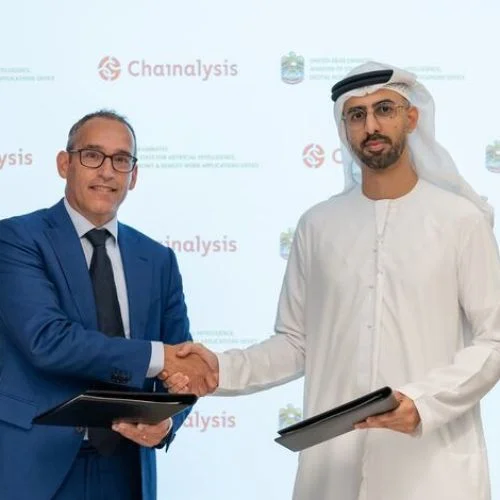George Russell's Strategic Choice: Overcoming Mercedes' Weakness

Table of Contents
Analyzing Mercedes' 2023 Weaknesses
The Mercedes W14 suffered from several significant flaws that hampered its performance throughout the 2023 season. These weaknesses significantly impacted race strategy and demanded innovative solutions from Russell and his team.
Porpoising and Bouncing
The Mercedes W14, like its predecessor, suffered from significant porpoising – a phenomenon where the car violently bounces up and down at high speeds. This issue severely impacted car performance.
- Reduced Downforce: Porpoising disrupted the aerodynamic balance, leading to a loss of downforce and grip.
- Increased Tire Wear: The constant bouncing put immense stress on the tires, accelerating degradation and limiting stint length.
- Compromised Lap Times: The unstable ride made it difficult to achieve consistent lap times, hindering qualifying performance and race pace. Mercedes consistently lagged behind Red Bull and Ferrari in terms of lap times, often by a significant margin.
Lack of Top Speed
Another major weakness of the W14 was its lack of top speed on straights. This deficiency severely limited overtaking opportunities.
- Difficult Overtaking: The lower straight-line speed meant Russell often struggled to pass rivals on longer straights, even with the aid of DRS.
- Impact on Qualifying: The lack of top speed also hampered qualifying performance, as it reduced the car's overall lap time potential on circuits with long straights.
- Strategic Implications: This weakness forced Russell and his team to adopt different overtaking strategies, relying more on superior cornering speed and tire management.
Tire Degradation
Mercedes struggled with excessive tire degradation throughout the season. This significantly influenced their race strategy.
- Conservative Stint Lengths: The high rate of tire wear often forced the team to opt for shorter, more conservative stint lengths, potentially sacrificing overall race pace.
- Increased Pit Stop Frequency: The need to manage tire wear meant more frequent pit stops, potentially disrupting race rhythm and increasing the risk of strategy errors.
- Limited Race Pace: To conserve tires, Russell often had to manage his race pace, sacrificing outright speed to achieve a longer, more sustainable race performance.
Russell's Strategic Adaptations
Despite the car's limitations, Russell demonstrated remarkable strategic adaptability. His focus shifted from maximizing raw speed to optimizing performance within the constraints of the W14.
Conservative Race Management
Russell prioritized consistent points scoring over aggressive, high-risk maneuvers. His strategic approach focused on mitigating risk and securing points in every race.
- Avoiding Unnecessary Risks: Russell frequently avoided risky overtaking maneuvers, opting instead for safer positions to accumulate points gradually.
- Consistent Points Finishes: This strategy resulted in a high number of consistent points finishes, even if he wasn't consistently fighting for podium places.
- Maximizing Opportunities: He capitalized on opportunities presented by other drivers' mistakes or retirements.
Tire Strategy Optimization
Russell and his team meticulously optimized tire usage given the car's limitations, maximizing stint length and minimizing tire degradation.
- Precision Driving: Russell's precise driving style minimized tire wear, allowing for longer stints on a single set of tires.
- Strategic Pit Stops: The team meticulously planned pit stops, optimizing the timing to avoid losing track position.
- Fuel Saving: Careful fuel management strategies further contributed to maximizing tire life.
Qualifying Performance and Set-up
Russell consistently maximized his qualifying performance despite the car's inherent weaknesses, focusing on optimizing the car balance for a single flying lap.
- Balance Optimization: The setup was optimized for qualifying performance, sometimes compromising slightly on race pace.
- Maximize Qualifying Lap Time: This focus on qualifying meant he often started races in a better grid position than the car’s pace suggested.
- Race pace Compromise: This resulted in a slight disadvantage in race pace but secured better starting positions, increasing points potential.
The Impact of Russell's Approach
Russell's strategic approach yielded significant positive outcomes for both himself and the Mercedes team.
Consistent Points Scoring
Russell's consistent points scoring was remarkable, considering Mercedes' struggles.
- High Points Tally: His points tally consistently placed him ahead of his teammate, highlighting his superior racecraft and strategic decision-making.
- Championship Position: His consistent performance secured a respectable position in the Drivers' Championship.
- Outperforming the Car: He consistently outperformed what the car's raw performance suggested.
Team Leadership and Morale
Russell's performance and positive attitude significantly boosted team morale amidst adversity.
- Maintaining Team Spirit: His consistent efforts kept team morale high, even when faced with challenging circumstances.
- Valuable Driver Feedback: His feedback to the engineering team provided crucial insights for future car development.
- Positive Influence: His leadership and consistent performance were crucial in maintaining a positive atmosphere within the Mercedes team.
Conclusion: George Russell's Strategic Choice: A Masterclass in Overcoming Weakness
George Russell's 2023 season demonstrated his exceptional strategic brilliance. By meticulously adapting his driving style and working closely with his team, he successfully mitigated the Mercedes W14's weaknesses, securing consistent points and maintaining high team morale. His performance serves as a textbook example of how strategic decision-making can overcome significant performance deficits. What strategic choices could you learn from George Russell's impressive performance? Share your thoughts in the comments below!

Featured Posts
-
 Learning From Sarah Vines Whats App Blunder
May 26, 2025
Learning From Sarah Vines Whats App Blunder
May 26, 2025 -
 Hudson Valleys Top Shrimp Dishes 5 Restaurant Picks
May 26, 2025
Hudson Valleys Top Shrimp Dishes 5 Restaurant Picks
May 26, 2025 -
 Blockchain Analysis Powerhouse Chainalysis Integrates Ai With Alterya Purchase
May 26, 2025
Blockchain Analysis Powerhouse Chainalysis Integrates Ai With Alterya Purchase
May 26, 2025 -
 Naomi Kempbell 55 Rokiv Foto Zirki U Vsiy Krasi
May 26, 2025
Naomi Kempbell 55 Rokiv Foto Zirki U Vsiy Krasi
May 26, 2025 -
 Nonton Balapan Moto Gp Argentina 2025 Live Streaming Siaran Langsung Dini Hari
May 26, 2025
Nonton Balapan Moto Gp Argentina 2025 Live Streaming Siaran Langsung Dini Hari
May 26, 2025
